How to program STM32F030F4P6TR microcontroller: A complete tutorial
16KB 16K x 8 FLASH ARM® Cortex®-M0 32-Bit Microcontroller STM32F0 Series STM32F03 20 Pin 48MHz 3.3V 20-TSSOP (0.173, 4.40mm Width)









16KB 16K x 8 FLASH ARM® Cortex®-M0 32-Bit Microcontroller STM32F0 Series STM32F03 20 Pin 48MHz 3.3V 20-TSSOP (0.173, 4.40mm Width)
Step-by-step guide to programming STM32F030F4P6TR microcontroller, covering setup, GPIO, UART, interrupts, and debugging for embedded systems projects.
Product Introduction
The STM32F030F4P6TR microcontroller is a compact and efficient choice for embedded systems. It combines affordability with excellent performance, making it ideal for projects requiring reliable and cost-effective solutions. With 32KB of Flash memory and 4KB of SRAM, this microcontroller provides enough resources for various applications without compromising efficiency.
This microcontroller finds use in a wide range of fields. You can use it for home automation, industrial control systems, and even small-scale robotics. Its versatility and ease of use make it a favorite among both hobbyists and professionals.
Learning STM32 programming is an essential skill for beginners and experienced developers. It introduces you to advanced concepts like controlling a GPIO in STM32 and setting up communication protocols. For instance, exploring a practical STM32 UART to PC example can enhance your understanding of serial communication. With STM32F0 projects, you can build a strong foundation in embedded systems design while preparing for more complex challenges.
Setting up the STM32 programming environment
Before diving into STM32 programming, you need to set up the right tools and environment. This step ensures a smooth development process and helps you avoid common pitfalls. Follow this tutorial to install the necessary software and drivers, update the firmware, and prepare your STM32F030F4P6TR microcontroller for programming.
Installing STM32CubeIDE and STM32CubeMX
STM32CubeIDE is an all-in-one development tool for STM32 microcontrollers. It combines a powerful code editor, debugger, and project management features. STM32CubeMX, on the other hand, simplifies STM32 chip configuration and peripheral setup. Together, these tools form the backbone of your STM32 programming environment.
To install STM32CubeIDE:
Visit the official STMicroelectronics website and download the latest version of STM32CubeIDE.
Run the installer and follow the on-screen instructions.
Once installed, launch the software and ensure it runs without issues.
Next, install STM32CubeMX:
Download STM32CubeMX from the same website.
Install it by following the provided steps.
Open STM32CubeMX and explore its features, such as pin configuration and clock setup.
These tools are reliable and widely used. For example, STM32CubeMX is a manufacturer-provided utility that simplifies configuration, making it a trusted choice for developers. With these tools, you can create a new project in STM32CubeIDE and configure your STM32 chip efficiently.
Updating ST-LINK firmware
ST-LINK is a debugging and programming tool for STM32 microcontrollers. Keeping its firmware updated ensures compatibility with the latest software and improves debugging performance. Here’s how you can update the firmware:
Connect your ST-LINK device to your computer.
Download the ST-LINK Utility from the STMicroelectronics website.
Open the utility and check for firmware updates.
Follow the prompts to update the firmware.
Updating the firmware offers several benefits. For instance, it enhances debugging capabilities, allowing you to set unlimited breakpoints in Flash memory. It also speeds up the debugging process, which can shorten development time and help you bring your projects to market faster. These improvements make updating the firmware a crucial step in this programming tutorial.
Installing necessary drivers for STM32F030F4P6TR
Drivers act as a bridge between your computer and the STM32 microcontroller. Without them, your computer won’t recognize the STM32F030F4P6TR. To install the drivers:
Download the USB driver package from the STMicroelectronics website.
Install the drivers by running the setup file.
Restart your computer to ensure the drivers are properly loaded.
The installation process is straightforward and reliable. For example, the ST-LINK/V2 utility works seamlessly with Windows, demonstrating that these practices are tested and verified. Once the drivers are installed, your STM32F030F4P6TR will be ready for programming.
By completing these steps, you’ll have a fully functional STM32 programming environment. This setup lays the foundation for creating and running your first example project on the STM32F030F4P6TR microcontroller.
Creating and configuring a project for STM32F030F4P6TR
Starting a new project in STM32CubeIDE
To begin programming the STM32F030F4P6TR, you need to create a new project in STM32CubeIDE. Open the IDE and select "File > New > STM32 Project." A device selector window will appear. Search for STM32F030F4P6TR and select it. This step ensures the IDE tailors the project to your microcontroller's specifications.
After selecting the device, the IDE will prompt you to name your project and choose a location to save it. Use a descriptive name to keep your projects organized. Once the project is created, STM32CubeIDE automatically generates essential files, including a basic c program template. These files provide a foundation for your programming tasks, making it easier for beginners to get started.
Configuring GPIO pins and clock settings
Proper GPIO and clock configuration is crucial for STM32 projects. Start by enabling the GPIO port clocks using the __HAL_RCC_GPIOX_CLK_ENABLE() macro or the RCC AHB1 peripheral clock enable register. This step ensures the microcontroller can communicate with external devices.
Next, configure the GPIO pins. You can set them to modes like Output Push Pull or Output Open Drain, depending on your requirements. Pull-up or pull-down resistors can be added to stabilize the signal. STM32CubeMX simplifies this process by providing a graphical interface for managing GPIO settings.
Here’s a quick reference table for GPIO characteristics:
| Characteristic | Value |
|---|---|
| Output Voltage Level | 3.3V |
| Maximum Current Limit | 25mA per IO pin |
| Speed Options | Low (up to 10MHz), Medium (up to 50MHz), High (up to 100MHz), Very High (up to 180MHz) |
Clock settings are equally important. Use STM32CubeMX to configure the system clock and peripheral clocks. This tool ensures optimal performance by allowing you to adjust clock speeds and sources.
Using the Device Configuration Tool for peripheral setup
STM32CubeMX includes a Device Configuration Tool that simplifies peripheral setup. Open the tool and select the peripherals you want to use, such as UART, SPI, or ADC. The tool provides a visual representation of the microcontroller's pins, helping you assign functions to specific pins.
For example, if you want to use UART for serial communication, select the UART peripheral and assign TX and RX pins. The tool automatically generates initialization code for the selected peripherals, saving you time and reducing errors.
This step is especially helpful for beginners. It eliminates the need to write complex initialization code manually, allowing you to focus on the logic of your c program. Once the configuration is complete, generate the code and import it into STM32CubeIDE. You’re now ready to start programming your STM32F030F4P6TR microcontroller.
Understanding STM32 project structure
Overview of the STM32CubeIDE project tree
The STM32CubeIDE project tree organizes your code and resources into a clear, hierarchical structure. This layout helps you manage complex embedded projects efficiently. When you create a new project, the IDE automatically generates folders and files, such as Src, Inc, and Drivers. Each folder serves a specific purpose, keeping your project neat and easy to navigate.
The
Srcfolder contains source files likemain.c, where you write your application logic.The
Incfolder holds header files, which define functions and variables used across your project.The
Driversfolder includes the Hardware Abstraction Layer (HAL) and low-level drivers, simplifying hardware interaction.
This structure ensures that your code remains modular and organized, even as your project grows. The HAL, for example, abstracts hardware-specific complexities, making it easier to develop and test your application. Tools like Renode can emulate hardware, allowing you to test your code in a controlled environment before deploying it.
Key files: main.c, startup files, and HAL libraries
The main.c file is the heart of your project. It contains the main() function, where your program begins execution. You use this file to initialize peripherals, configure GPIOs, and implement your application logic.
Startup files handle low-level initialization tasks, such as setting up the stack and heap memory. These files ensure your microcontroller is ready to execute your code. HAL libraries provide a standardized interface for interacting with peripherals like UART, SPI, and ADC. They save you time by generating reliable, reusable code.
How the project structure supports STM32 programming
A well-organized project structure simplifies debugging and maintenance. For example:
| Feature | Benefit |
|---|---|
| Flexibility | Allows you to revisit configurations and regenerate code without affecting existing code. |
| Project status and memory info | Displays essential details through build and stack analyzers. |
| Advanced debugging features | Offers CPU core register views, memory inspection, and fault analysis for efficient debugging. |
Additionally, the structure encourages writing test cases by including a dedicated test folder. This approach makes it easier to maintain your code over time and ensures your project remains scalable.
By understanding the STM32CubeIDE project structure, you can streamline your development process and focus on building robust applications.
Step by step guide to basic STM32 programming
Controlling GPIO for LED blinking
One of the simplest and most rewarding tasks in STM32 programming is making an LED blink. This exercise introduces you to GPIO control, a fundamental skill for working with the STM32F030F4P6TR microcontroller. Follow this step-by-step process to get started:
Configure the GPIO Pin:
Open STM32CubeMX and select the GPIO pin connected to your LED. Set the pin mode to "Output Push Pull" and disable pull-up or pull-down resistors if not needed. Generate the initialization code and import it into STM32CubeIDE.Write the Code:
In themain.cfile, toggle the GPIO pin to turn the LED on and off. Use the HAL library functions for simplicity. Here’s an example:HAL_GPIO_WritePin(GPIOB, GPIO_PIN_0, GPIO_PIN_SET); // Turn LED ON HAL_Delay(500); // Wait for 500ms HAL_GPIO_WritePin(GPIOB, GPIO_PIN_0, GPIO_PIN_RESET); // Turn LED OFF HAL_Delay(500); // Wait for 500ms
Build and Flash the Code:
Compile your project and flash the code onto the STM32F030F4P6TR using ST-LINK. Once done, observe the LED blinking at the specified interval.
This exercise not only demonstrates GPIO control but also introduces you to the process of writing and testing code on the microcontroller. By following this step-by-step approach, you can build confidence in STM32 programming while mastering the basics.
Implementing delay functions
Delays are essential for timing operations in embedded systems. In STM32 projects, you can implement delays using the HAL library or advanced techniques for higher precision. Let’s explore both methods.
Using HAL_Delay():
The HAL library provides a simpleHAL_Delay()function that uses the SysTick timer. This method is easy to implement but may not be suitable for high-precision tasks. For example:HAL_Delay(1000); // Delay for 1000ms (1 second)
Improving Delay Accuracy:
For more accurate delays, consider using a free-running timer or the debug timer (DWT->CYCCNT). These methods avoid issues like interrupt blocking or compiler optimization. Here’s a quick reference table for common delay challenges and solutions:Issue Solution HAL_GetTick() accuracy affected by interrupts Use a free running timer to avoid blocking interrupts. Compiler optimization may affect delay accuracy Declare delay variables as volatile to prevent optimization. Need for fine precision timing Utilize the debug timer (DWT->CYCCNT) for high-resolution timing. Testing Your Delay Function:
After implementing your delay, test it by observing the timing of GPIO toggling. For instance, use an oscilloscope to measure the time interval between LED blinks.
Accurate delays are critical for applications like communication protocols and sensor interfacing. By understanding these techniques, you can ensure your STM32 projects meet timing requirements.
Debugging code with ST-LINK
Debugging is a vital part of STM32 programming. The ST-LINK debugger simplifies this process by allowing you to inspect and modify your code in real time. Here’s how you can use it effectively:
Set Up the Debugger:
Connect the ST-LINK device to your STM32F030F4P6TR and configure the debugger in STM32CubeIDE. Select "ST-LINK" as the debugging interface and ensure the connection is stable.Use Breakpoints:
Place breakpoints in your code to pause execution at specific lines. This feature helps you analyze variable values and program flow. For example, set a breakpoint in the LED blinking loop to verify GPIO states.Inspect Registers and Memory:
The ST-LINK debugger allows you to examine register values and memory locations without stopping the code execution. This capability saves time and helps you identify issues quickly. Some benefits of using ST-LINK include:Direct examination of register values without halting the program.
Quick checks of IO registers to identify problems without adding print statements.
Faster debugging, which reduces overall development time.
Analyze Faults:
If your program crashes, use the debugger to analyze the fault status registers. This step helps you pinpoint the cause of the crash and implement a fix.
By mastering ST-LINK debugging, you can streamline your development process and produce reliable code. This tool is indispensable for both beginners and experienced developers working on STM32 projects.
Intermediate STM32 programming concepts
Setting up and handling interrupts
Interrupts allow your STM32 microcontroller to respond to events immediately, making your applications more efficient. To set up an interrupt, you need to configure the NVIC (Nested Vectored Interrupt Controller) and enable the desired interrupt in your code. For example, to handle a button press, configure the GPIO pin as an interrupt source and write an Interrupt Service Routine (ISR) in the c file.
Efficient interrupt handling improves performance significantly. The table below highlights key improvements:
| Performance Improvement | Description |
|---|---|
| Interrupts Tail-Chaining SpeedUp | Skips context push & pop when a new interrupt is pending, reducing latency. Requires only 6 cycles on Cortex-M3/M4. |
| Interrupt Late Arrival SpeedUp | Detects higher priority interrupts during another interrupt's entry phase, reducing latency by skipping context saving for the higher priority ISR. |
| Pre-Emption | Interrupts a running task to handle a higher priority exception, ensuring critical tasks are serviced promptly. |
By mastering interrupts, you can create responsive and efficient STM32 applications.
Configuring UART for serial communication
UART (Universal Asynchronous Receiver-Transmitter) is a widely used protocol for serial communication in STM32 microcontrollers. It operates asynchronously, relying on parameters like baud rate, data bits, stop bits, and parity bits to ensure reliable data transmission. For instance, STM32 microcontrollers can achieve baud rates up to 4.5Mbps, making them suitable for high-speed communication.
To configure UART, use STM32CubeMX to select the UART peripheral and assign TX and RX pins. The tool generates initialization code, which you can use in your c program. Proper configuration ensures efficient and reliable communication between devices.
Practical examples of UART communication with STM32F030F4P6TR
A common example of UART communication is sending and receiving data between the STM32F030F4P6TR and a PC. Follow these steps to implement it:
Initialize UART: Use the HAL library to initialize UART with the desired parameters. For example:
HAL_UART_Transmit(&huart1, (uint8_t*)"Hello, UART!\r\n", 14, HAL_MAX_DELAY);
Transmit Data: Send a string or data array using the
HAL_UART_Transmitfunction. This function ensures the data is sent byte by byte.Receive Data: Use
HAL_UART_Receiveto read incoming data. Store the received data in a buffer for further processing.
This example demonstrates how to use UART for basic communication. By experimenting with different configurations, you can adapt UART for various applications.
Building and running your STM32 code
Compiling and building the project
After writing your code, the next step is to compile and build it. This process converts your C program into machine-readable instructions that the STM32F030F4P6TR microcontroller can execute. Open STM32CubeIDE and click on the "Build" button in the toolbar. The IDE will compile your code and generate a binary file.
During the build process, the IDE checks for errors in your code. If there are any issues, the console will display error messages. Review these messages carefully and fix the problems in your code. Once the build completes successfully, you will see a "Build Finished" message in the console.
Tools like STM32CubeIDE simplify this process by automating many tasks. They ensure that your project builds reliably. For example, STM32CubeMX helps you configure peripherals correctly, reducing the chances of errors during compilation. These tools enhance the efficiency of your development cycle.
Flashing the code onto the STM32F030F4P6TR microcontroller
Once your code is ready, you need to flash it onto the STM32F030F4P6TR microcontroller. Connect your microcontroller to your computer using an ST-LINK programmer. In STM32CubeIDE, click on the "Run" button or select "Run > Debug" from the menu. The IDE will upload the binary file to the microcontroller.
Flashing transfers your code to the microcontroller's memory. After flashing, the microcontroller starts executing the code immediately. If the flashing process fails, check the connections between your computer and the microcontroller. Ensure that the ST-LINK drivers are installed correctly.
Using advanced techniques like RTOS hooks and watchdog timers can improve system stability. These features help prevent crashes and ensure that your code runs reliably on the microcontroller.
Testing and verifying the functionality of your program
Testing is the final step in the development process. After flashing the code, observe the behavior of your STM32F030F4P6TR microcontroller. For example, if you programmed it to blink an LED, check if the LED blinks as expected.
Use debugging tools like ST-LINK to verify your program's functionality. Set breakpoints in your code to pause execution and inspect variable values. This helps you identify and fix any issues. You can also use an oscilloscope or logic analyzer to measure signals and ensure that your microcontroller behaves as intended.
Advanced FreeRTOS techniques can further optimize your project. They ensure that your code runs efficiently, even in complex applications. By thoroughly testing your program, you can create robust and reliable STM32 projects.
You’ve learned how to program the stm32f030f4p6tr microcontroller step by step. From setting up the environment to debugging and testing, each stage builds your confidence in stm32 programming. These foundational skills prepare you for more advanced topics like Direct Memory Access (DMA) and Real-Time Operating Systems (RTOS).
To deepen your knowledge, explore the RM0360 Reference Manual. It provides detailed insights into the stm32f030f4p6tr architecture and features. You can also find tutorials and forums online to expand your understanding. Keep experimenting and building projects to master stm32 programming.
FAQ
What is the best way to debug STM32 code?
You can use the ST-LINK debugger in STM32CubeIDE. It allows you to set breakpoints, inspect variables, and analyze memory. This tool helps you identify issues in real time. For example, you can pause execution at specific lines to check GPIO states or peripheral configurations.
How do you choose the correct clock settings for STM32F030F4P6TR?
Use STM32CubeMX to configure the clock tree visually. Select the internal or external oscillator based on your project needs. For most applications, the internal HSI clock works well. Adjust the PLL settings to achieve the desired system clock frequency.
Can you program STM32F030F4P6TR without an ST-LINK?
Yes, you can use the UART bootloader for programming. Connect the microcontroller's UART pins to a USB-to-serial adapter. Use software like STM32CubeProgrammer to flash the code. However, ST-LINK offers better debugging features and is recommended for development.
What should you do if the microcontroller doesn’t respond after flashing?
Check the power supply and connections. Ensure the ST-LINK drivers are installed correctly. Verify that the code doesn’t contain infinite loops or misconfigured peripherals. Use the debugger to analyze the fault status registers for clues.
How do you reset the STM32F030F4P6TR to factory settings?
Use the STM32CubeProgrammer to erase the Flash memory. Connect the microcontroller via ST-LINK, open the software, and select "Full Chip Erase." This process removes all user code and restores the microcontroller to its default state.
Tip: Always back up your code before performing a full chip erase.
Specifications
- TypeParameter
- Lifecycle Status
Lifecycle Status refers to the current stage of an electronic component in its product life cycle, indicating whether it is active, obsolete, or transitioning between these states. An active status means the component is in production and available for purchase. An obsolete status indicates that the component is no longer being manufactured or supported, and manufacturers typically provide a limited time frame for support. Understanding the lifecycle status is crucial for design engineers to ensure continuity and reliability in their projects.
ACTIVE (Last Updated: 7 months ago) - Factory Lead Time10 Weeks
- Contact Plating
Contact plating (finish) provides corrosion protection for base metals and optimizes the mechanical and electrical properties of the contact interfaces.
Gold - Mount
In electronic components, the term "Mount" typically refers to the method or process of physically attaching or fixing a component onto a circuit board or other electronic device. This can involve soldering, adhesive bonding, or other techniques to secure the component in place. The mounting process is crucial for ensuring proper electrical connections and mechanical stability within the electronic system. Different components may have specific mounting requirements based on their size, shape, and function, and manufacturers provide guidelines for proper mounting procedures to ensure optimal performance and reliability of the electronic device.
Surface Mount - Mounting Type
The "Mounting Type" in electronic components refers to the method used to attach or connect a component to a circuit board or other substrate, such as through-hole, surface-mount, or panel mount.
Surface Mount - Package / Case
refers to the protective housing that encases an electronic component, providing mechanical support, electrical connections, and thermal management.
20-TSSOP (0.173, 4.40mm Width) - Number of Pins20
- Weight190.990737mg
- Data ConvertersA/D 11x12b
- Number of I/Os15
- Watchdog TimersYes
- Operating Temperature
The operating temperature is the range of ambient temperature within which a power supply, or any other electrical equipment, operate in. This ranges from a minimum operating temperature, to a peak or maximum operating temperature, outside which, the power supply may fail.
-40°C~85°C TA - Packaging
Semiconductor package is a carrier / shell used to contain and cover one or more semiconductor components or integrated circuits. The material of the shell can be metal, plastic, glass or ceramic.
Tape & Reel (TR) - Series
In electronic components, the "Series" refers to a group of products that share similar characteristics, designs, or functionalities, often produced by the same manufacturer. These components within a series typically have common specifications but may vary in terms of voltage, power, or packaging to meet different application needs. The series name helps identify and differentiate between various product lines within a manufacturer's catalog.
STM32F0 - JESD-609 Code
The "JESD-609 Code" in electronic components refers to a standardized marking code that indicates the lead-free solder composition and finish of electronic components for compliance with environmental regulations.
e4 - Part Status
Parts can have many statuses as they progress through the configuration, analysis, review, and approval stages.
Active - Moisture Sensitivity Level (MSL)
Moisture Sensitivity Level (MSL) is a standardized rating that indicates the susceptibility of electronic components, particularly semiconductors, to moisture-induced damage during storage and the soldering process, defining the allowable exposure time to ambient conditions before they require special handling or baking to prevent failures
1 (Unlimited) - Number of Terminations20
- Max Power Dissipation
The maximum power that the MOSFET can dissipate continuously under the specified thermal conditions.
182mW - Terminal Position
In electronic components, the term "Terminal Position" refers to the physical location of the connection points on the component where external electrical connections can be made. These connection points, known as terminals, are typically used to attach wires, leads, or other components to the main body of the electronic component. The terminal position is important for ensuring proper connectivity and functionality of the component within a circuit. It is often specified in technical datasheets or component specifications to help designers and engineers understand how to properly integrate the component into their circuit designs.
DUAL - Terminal Form
Occurring at or forming the end of a series, succession, or the like; closing; concluding.
GULL WING - Supply Voltage
Supply voltage refers to the electrical potential difference provided to an electronic component or circuit. It is crucial for the proper operation of devices, as it powers their functions and determines performance characteristics. The supply voltage must be within specified limits to ensure reliability and prevent damage to components. Different electronic devices have specific supply voltage requirements, which can vary widely depending on their design and intended application.
3.3V - Terminal Pitch
The center distance from one pole to the next.
0.65mm - Frequency
In electronic components, the parameter "Frequency" refers to the rate at which a signal oscillates or cycles within a given period of time. It is typically measured in Hertz (Hz) and represents how many times a signal completes a full cycle in one second. Frequency is a crucial aspect in electronic components as it determines the behavior and performance of various devices such as oscillators, filters, and communication systems. Understanding the frequency characteristics of components is essential for designing and analyzing electronic circuits to ensure proper functionality and compatibility with other components in a system.
48MHz - Base Part Number
The "Base Part Number" (BPN) in electronic components serves a similar purpose to the "Base Product Number." It refers to the primary identifier for a component that captures the essential characteristics shared by a group of similar components. The BPN provides a fundamental way to reference a family or series of components without specifying all the variations and specific details.
STM32F03 - Operating Supply Voltage
The voltage level by which an electrical system is designated and to which certain operating characteristics of the system are related.
3.3V - Supply Voltage-Max (Vsup)
The parameter "Supply Voltage-Max (Vsup)" in electronic components refers to the maximum voltage that can be safely applied to the component without causing damage. It is an important specification to consider when designing or using electronic circuits to ensure the component operates within its safe operating limits. Exceeding the maximum supply voltage can lead to overheating, component failure, or even permanent damage. It is crucial to adhere to the specified maximum supply voltage to ensure the reliable and safe operation of the electronic component.
3.6V - Interface
In electronic components, the term "Interface" refers to the point at which two different systems, devices, or components connect and interact with each other. It can involve physical connections such as ports, connectors, or cables, as well as communication protocols and standards that facilitate the exchange of data or signals between the connected entities. The interface serves as a bridge that enables seamless communication and interoperability between different parts of a system or between different systems altogether. Designing a reliable and efficient interface is crucial in ensuring proper functionality and performance of electronic components and systems.
I2C, SPI, UART, USART - Memory Size
The memory capacity is the amount of data a device can store at any given time in its memory.
16kB - Oscillator Type
Wien Bridge Oscillator; RC Phase Shift Oscillator; Hartley Oscillator; Voltage Controlled Oscillator; Colpitts Oscillator; Clapp Oscillators; Crystal Oscillators; Armstrong Oscillator.
Internal - RAM Size
RAM size refers to the amount of random access memory (RAM) available in an electronic component, such as a computer or smartphone. RAM is a type of volatile memory that stores data and instructions that are actively being used by the device's processor. The RAM size is typically measured in gigabytes (GB) and determines how much data the device can store and access quickly for processing. A larger RAM size allows for smoother multitasking, faster loading times, and better overall performance of the electronic component. It is an important factor to consider when choosing a device, especially for tasks that require a lot of memory, such as gaming, video editing, or running multiple applications simultaneously.
4K x 8 - Voltage - Supply (Vcc/Vdd)
Voltage - Supply (Vcc/Vdd) is a key parameter in electronic components that specifies the voltage level required for the proper operation of the device. It represents the power supply voltage that needs to be provided to the component for it to function correctly. This parameter is crucial as supplying the component with the correct voltage ensures that it operates within its specified limits and performance characteristics. It is typically expressed in volts (V) and is an essential consideration when designing and using electronic circuits to prevent damage and ensure reliable operation.
2.4V~3.6V - uPs/uCs/Peripheral ICs Type
The parameter "uPs/uCs/Peripheral ICs Type" refers to the classification of various integrated circuits used in electronic devices. It encompasses microprocessors (uPs), microcontrollers (uCs), and peripheral integrated circuits that provide additional functionalities. This classification helps in identifying the specific type of chip used for processing tasks, controlling hardware, or interfacing with other components in a system. Understanding this parameter is essential for selecting the appropriate electronic components for a given application.
MICROCONTROLLER, RISC - Core Processor
The term "Core Processor" typically refers to the central processing unit (CPU) of a computer or electronic device. It is the primary component responsible for executing instructions, performing calculations, and managing data within the system. The core processor is often considered the brain of the device, as it controls the overall operation and functionality. It is crucial for determining the speed and performance capabilities of the device, as well as its ability to handle various tasks and applications efficiently. In modern devices, core processors can have multiple cores, allowing for parallel processing and improved multitasking capabilities.
ARM® Cortex®-M0 - Peripherals
In the context of electronic components, "Peripherals" refer to devices or components that are connected to a main system or device to enhance its functionality or provide additional features. These peripherals can include input devices such as keyboards, mice, and touchscreens, as well as output devices like monitors, printers, and speakers. Other examples of peripherals include external storage devices, network adapters, and cameras. Essentially, peripherals are external devices that expand the capabilities of a main electronic system or device.
DMA, POR, PWM, WDT - Program Memory Type
Program memory typically refers to flash memory when it is used to hold the program (instructions). Program memory may also refer to a hard drive or solid state drive (SSD). Contrast with data memory.
FLASH - Core Size
Core size in electronic components refers to the physical dimensions of the core material used in devices such as inductors and transformers. The core size directly impacts the performance characteristics of the component, including its inductance, saturation current, and frequency response. A larger core size typically allows for higher power handling capabilities and lower core losses, while a smaller core size may result in a more compact design but with limitations on power handling and efficiency. Designers must carefully select the core size based on the specific requirements of the application to achieve optimal performance and efficiency.
32-Bit - Program Memory Size
Program Memory Size refers to the amount of memory available in an electronic component, such as a microcontroller or microprocessor, that is used to store program instructions. This memory is non-volatile, meaning that the data stored in it is retained even when the power is turned off. The program memory size determines the maximum amount of code that can be stored and executed by the electronic component. It is an important parameter to consider when selecting a component for a specific application, as insufficient program memory size may limit the functionality or performance of the device.
16KB 16K x 8 - Connectivity
In electronic components, "Connectivity" refers to the ability of a component to establish and maintain connections with other components or devices within a circuit. It is a crucial parameter that determines how easily signals can be transmitted between different parts of a circuit. Connectivity can be influenced by factors such as the number of input and output ports, the type of connectors used, and the overall design of the component. Components with good connectivity are essential for ensuring reliable and efficient operation of electronic systems.
I2C, SPI, UART/USART - Supply Current-Max
Supply Current-Max refers to the maximum amount of current that an electronic component or circuit can draw from its power supply under specified operating conditions. It is a critical parameter that determines the power consumption and thermal performance of the device. Exceeding this limit can lead to overheating, potential damage, or failure of the component. Knowing the Supply Current-Max helps in designing circuits that ensure proper operation and reliability.
23.2mA - Bit Size
In electronic components, "Bit Size" refers to the number of bits that can be processed or stored by a particular component. A bit is the smallest unit of data in computing and can have a value of either 0 or 1. The Bit Size parameter is commonly used to describe the capacity or performance of components such as microprocessors, memory modules, and data buses. A larger Bit Size generally indicates a higher processing capability or storage capacity, allowing for more complex operations and larger amounts of data to be handled efficiently. It is an important specification to consider when selecting electronic components for specific applications that require certain levels of performance and data processing capabilities.
32 - Has ADC
Has ADC refers to the presence of an Analog-to-Digital Converter (ADC) in an electronic component. An ADC is a crucial component in many electronic devices as it converts analog signals, such as voltage or current, into digital data that can be processed by a digital system. Having an ADC allows the electronic component to interface with analog signals and convert them into a format that can be manipulated and analyzed digitally. This parameter is important for applications where analog signals need to be converted into digital form for further processing or control.
YES - DMA Channels
DMA (Direct Memory Access) Channels are a feature found in electronic components such as microcontrollers, microprocessors, and peripheral devices. DMA Channels allow data to be transferred directly between peripherals and memory without involving the CPU, thereby reducing the burden on the CPU and improving overall system performance. Each DMA Channel is typically assigned to a specific peripheral device or memory region, enabling efficient data transfer operations. The number of DMA Channels available in a system determines the concurrent data transfer capabilities and can vary depending on the specific hardware design. Overall, DMA Channels play a crucial role in optimizing data transfer efficiency and system performance in electronic devices.
YES - Data Bus Width
The data bus width in electronic components refers to the number of bits that can be transferred simultaneously between the processor and memory. It determines the amount of data that can be processed and transferred in a single operation. A wider data bus allows for faster data transfer speeds and improved overall performance of the electronic device. Common data bus widths include 8-bit, 16-bit, 32-bit, and 64-bit, with higher numbers indicating a larger capacity for data transfer. The data bus width is an important specification to consider when evaluating the speed and efficiency of a computer system or other electronic device.
32b - PWM Channels
PWM Channels, or Pulse Width Modulation Channels, refer to the number of independent PWM outputs available in an electronic component, such as a microcontroller or a motor driver. PWM is a technique used to generate analog-like signals by varying the duty cycle of a square wave signal. Each PWM channel can control the output of a specific device or component by adjusting the pulse width of the signal. Having multiple PWM channels allows for precise control of multiple devices simultaneously, making it a valuable feature in applications such as motor control, LED dimming, and audio signal generation. The number of PWM channels available in a component determines the flexibility and complexity of the system it can control.
YES - DAC Channels
DAC Channels refer to the number of independent analog output channels available in a digital-to-analog converter (DAC) electronic component. Each channel can convert a digital input signal into an analog output voltage or current. The number of DAC channels determines how many separate analog signals can be generated simultaneously by the DAC. For example, a DAC with two channels can output two different analog signals at the same time, while a DAC with only one channel can only output a single analog signal. The number of DAC channels is an important specification to consider when selecting a DAC for applications requiring multiple analog outputs.
NO - Number of Timers/Counters10
- Core Architecture
In electronic components, the term "Core Architecture" refers to the fundamental design and structure of the component's internal circuitry. It encompasses the arrangement of key components, such as processors, memory units, and input/output interfaces, within the device. The core architecture plays a crucial role in determining the component's performance, power efficiency, and overall capabilities. Different core architectures are optimized for specific applications and requirements, such as high-speed processing, low power consumption, or specialized functions. Understanding the core architecture of electronic components is essential for engineers and designers to select the most suitable components for their projects.
ARM - CPU Family
CPU Family refers to a classification of microprocessors that share a common architecture and design traits. It signifies a group of processors that are typically produced by the same manufacturer and have similar functionality and features. The CPU Family can encompass various models that may differ in performance, power consumption, and specific capabilities but retain a unified core design, allowing for compatibility with software and hardware. This classification helps users and developers to understand the performance characteristics and upgrade pathways of different CPU models within the same family.
CORTEX-M0 - Number of SPI Channels1
- Height1.05mm
- Length6.6mm
- Width4.5mm
- REACH SVHC
The parameter "REACH SVHC" in electronic components refers to the compliance with the Registration, Evaluation, Authorization, and Restriction of Chemicals (REACH) regulation regarding Substances of Very High Concern (SVHC). SVHCs are substances that may have serious effects on human health or the environment, and their use is regulated under REACH to ensure their safe handling and minimize their impact.Manufacturers of electronic components need to declare if their products contain any SVHCs above a certain threshold concentration and provide information on the safe use of these substances. This information allows customers to make informed decisions about the potential risks associated with using the components and take appropriate measures to mitigate any hazards.Ensuring compliance with REACH SVHC requirements is essential for electronics manufacturers to meet regulatory standards, protect human health and the environment, and maintain transparency in their supply chain. It also demonstrates a commitment to sustainability and responsible manufacturing practices in the electronics industry.
No SVHC - Radiation Hardening
Radiation hardening is the process of making electronic components and circuits resistant to damage or malfunction caused by high levels of ionizing radiation, especially for environments in outer space (especially beyond the low Earth orbit), around nuclear reactors and particle accelerators, or during nuclear accidents or nuclear warfare.
No - RoHS Status
RoHS means “Restriction of Certain Hazardous Substances” in the “Hazardous Substances Directive” in electrical and electronic equipment.
ROHS3 Compliant - Lead Free
Lead Free is a term used to describe electronic components that do not contain lead as part of their composition. Lead is a toxic material that can have harmful effects on human health and the environment, so the electronics industry has been moving towards lead-free components to reduce these risks. Lead-free components are typically made using alternative materials such as silver, copper, and tin. Manufacturers must comply with regulations such as the Restriction of Hazardous Substances (RoHS) directive to ensure that their products are lead-free and environmentally friendly.
Lead Free
Parts with Similar Specs
- ImagePart NumberManufacturerPackage / CaseNumber of PinsCore ArchitectureData Bus WidthNumber of I/OInterfaceMemory SizeSupply VoltageView Compare
STM32F030F4P6TR
20-TSSOP (0.173, 4.40mm Width)
20
ARM
32 b
15
I2C, SPI, UART, USART
16 kB
3.3 V
16-TSSOP (0.173, 4.40mm Width)
16
ARM
32 b
11
I2C, I2S, LIN, SPI, UART, USART
16 kB
2 V
20-TSSOP (0.173, 4.40mm Width)
20
ARM
32 b
15
I2C, SPI, USART
16 kB
3 V
20-TSSOP (0.173, 4.40mm Width)
20
ARM
32 b
15
I2C, SPI, USART, USB
32 kB
3.3 V
16-TSSOP (0.173, 4.40mm Width)
16
ARM
32 b
11
I2C, I2S, LIN, SPI, UART, USART
16 kB
-
Datasheet PDF
- Datasheets :
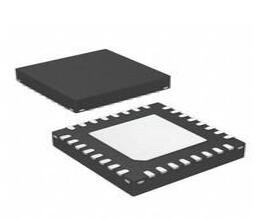 nRF52810 Multiprotocol SoC : Datasheet, Pinout, Schematic
nRF52810 Multiprotocol SoC : Datasheet, Pinout, Schematic11 September 20216957
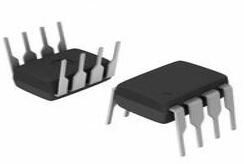 AT24C32 Two-Wire Serial EEPROM: Datasheet, Pinout and Address
AT24C32 Two-Wire Serial EEPROM: Datasheet, Pinout and Address15 October 20213458
![BC549 Bipolar Transistor[FAQ+Video]:Pinout, datasheet, and Circuit](https://res.utmel.com/Images/Article/85e6f679-fe57-40e8-a861-11d4f28c37ee.jpg) BC549 Bipolar Transistor[FAQ+Video]:Pinout, datasheet, and Circuit
BC549 Bipolar Transistor[FAQ+Video]:Pinout, datasheet, and Circuit06 April 20223422
 CR2016 vs. CR2032: Specifications, Applications, Differences
CR2016 vs. CR2032: Specifications, Applications, Differences04 November 202178875
 PN2222 Transistor: Pinout, Datasheet and Equivalent
PN2222 Transistor: Pinout, Datasheet and Equivalent20 July 20219614
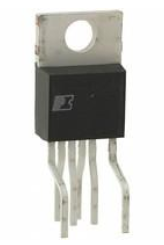 TOP245YN:TOP Switch-GX Family, Pin Diagram, Circuit Diagram
TOP245YN:TOP Switch-GX Family, Pin Diagram, Circuit Diagram15 May 20235082
 RT9193 Ultra-Fast CMOS LDO Regulator: Datasheet pdf, Ultra-Fast Regulator and Specifications
RT9193 Ultra-Fast CMOS LDO Regulator: Datasheet pdf, Ultra-Fast Regulator and Specifications26 November 20212873
 ESP32: a successor to the ESP8266 microcontroller
ESP32: a successor to the ESP8266 microcontroller21 February 20223751
 Exploring the Advancements in Storage Technologies and Grid Architecture of Electric Vehicle Charging Systems
Exploring the Advancements in Storage Technologies and Grid Architecture of Electric Vehicle Charging Systems18 October 20232057
 Weak Current Control Strong Current: How to use the Relay?
Weak Current Control Strong Current: How to use the Relay?28 November 20224157
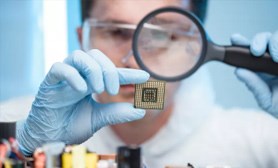 Long Life Small Volume Detector Switch for Intelligent Applications
Long Life Small Volume Detector Switch for Intelligent Applications16 March 20223019
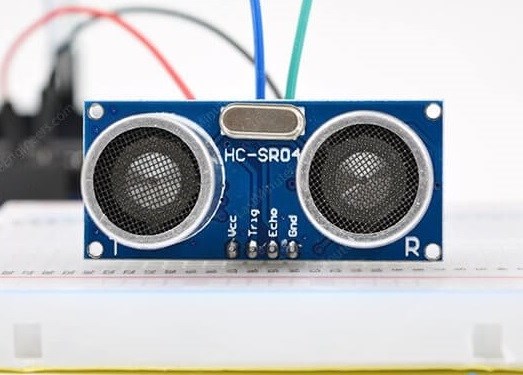 All You Need to Know about Ultrasonic Sensors
All You Need to Know about Ultrasonic Sensors25 October 202510030
 An Overview of Wind Turbine Generation and Control Techniques
An Overview of Wind Turbine Generation and Control Techniques25 October 20232271
 What is Bluetooth Low Energy (BLE) Audio Technology?
What is Bluetooth Low Energy (BLE) Audio Technology?26 April 20224642
 What is a Wireless Network Adapter?
What is a Wireless Network Adapter?01 June 20214783
 Comprehensive Introduction to Snapdragon 888
Comprehensive Introduction to Snapdragon 88828 June 202110670
STMicroelectronics
In Stock: 10605
United States
China
Canada
Japan
Russia
Germany
United Kingdom
Singapore
Italy
Hong Kong(China)
Taiwan(China)
France
Korea
Mexico
Netherlands
Malaysia
Austria
Spain
Switzerland
Poland
Thailand
Vietnam
India
United Arab Emirates
Afghanistan
Åland Islands
Albania
Algeria
American Samoa
Andorra
Angola
Anguilla
Antigua & Barbuda
Argentina
Armenia
Aruba
Australia
Azerbaijan
Bahamas
Bahrain
Bangladesh
Barbados
Belarus
Belgium
Belize
Benin
Bermuda
Bhutan
Bolivia
Bonaire, Sint Eustatius and Saba
Bosnia & Herzegovina
Botswana
Brazil
British Indian Ocean Territory
British Virgin Islands
Brunei
Bulgaria
Burkina Faso
Burundi
Cabo Verde
Cambodia
Cameroon
Cayman Islands
Central African Republic
Chad
Chile
Christmas Island
Cocos (Keeling) Islands
Colombia
Comoros
Congo
Congo (DRC)
Cook Islands
Costa Rica
Côte d’Ivoire
Croatia
Cuba
Curaçao
Cyprus
Czechia
Denmark
Djibouti
Dominica
Dominican Republic
Ecuador
Egypt
El Salvador
Equatorial Guinea
Eritrea
Estonia
Eswatini
Ethiopia
Falkland Islands
Faroe Islands
Fiji
Finland
French Guiana
French Polynesia
Gabon
Gambia
Georgia
Ghana
Gibraltar
Greece
Greenland
Grenada
Guadeloupe
Guam
Guatemala
Guernsey
Guinea
Guinea-Bissau
Guyana
Haiti
Honduras
Hungary
Iceland
Indonesia
Iran
Iraq
Ireland
Isle of Man
Israel
Jamaica
Jersey
Jordan
Kazakhstan
Kenya
Kiribati
Kosovo
Kuwait
Kyrgyzstan
Laos
Latvia
Lebanon
Lesotho
Liberia
Libya
Liechtenstein
Lithuania
Luxembourg
Macao(China)
Madagascar
Malawi
Maldives
Mali
Malta
Marshall Islands
Martinique
Mauritania
Mauritius
Mayotte
Micronesia
Moldova
Monaco
Mongolia
Montenegro
Montserrat
Morocco
Mozambique
Myanmar
Namibia
Nauru
Nepal
New Caledonia
New Zealand
Nicaragua
Niger
Nigeria
Niue
Norfolk Island
North Korea
North Macedonia
Northern Mariana Islands
Norway
Oman
Pakistan
Palau
Palestinian Authority
Panama
Papua New Guinea
Paraguay
Peru
Philippines
Pitcairn Islands
Portugal
Puerto Rico
Qatar
Réunion
Romania
Rwanda
Samoa
San Marino
São Tomé & Príncipe
Saudi Arabia
Senegal
Serbia
Seychelles
Sierra Leone
Sint Maarten
Slovakia
Slovenia
Solomon Islands
Somalia
South Africa
South Sudan
Sri Lanka
St Helena, Ascension, Tristan da Cunha
St. Barthélemy
St. Kitts & Nevis
St. Lucia
St. Martin
St. Pierre & Miquelon
St. Vincent & Grenadines
Sudan
Suriname
Svalbard & Jan Mayen
Sweden
Syria
Tajikistan
Tanzania
Timor-Leste
Togo
Tokelau
Tonga
Trinidad & Tobago
Tunisia
Turkey
Turkmenistan
Turks & Caicos Islands
Tuvalu
U.S. Outlying Islands
U.S. Virgin Islands
Uganda
Ukraine
Uruguay
Uzbekistan
Vanuatu
Vatican City
Venezuela
Wallis & Futuna
Yemen
Zambia
Zimbabwe









